|
|
|
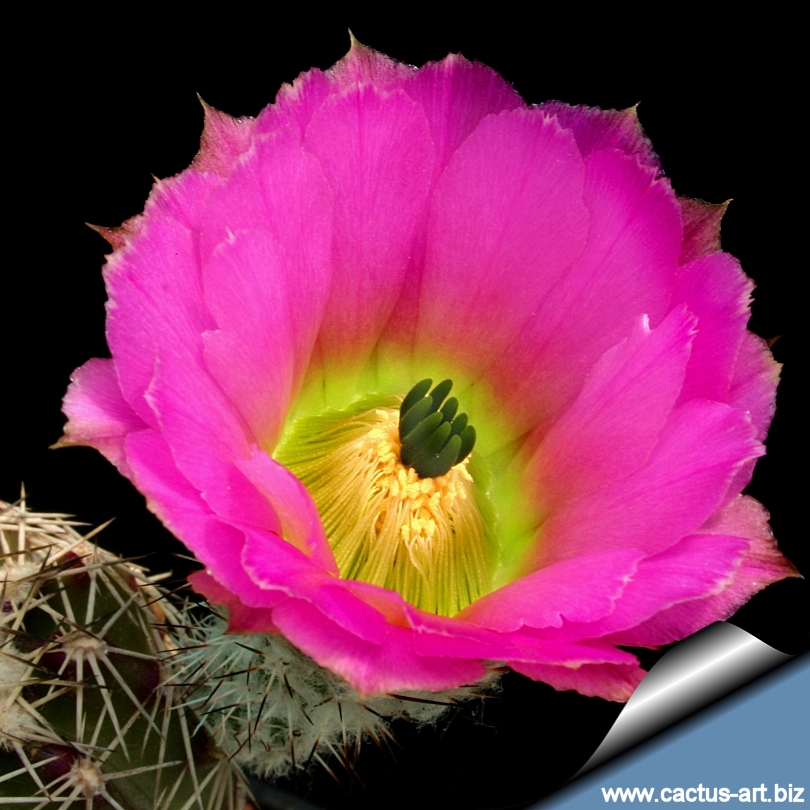
E. panamesiorum L1247 Locality: bridge on the road from Huejuquilla to
San Juan Capistrano, Zacatecas, Mexico 1000m.
Outstanding and incomparable flowers with a very spiny tube
|
Description: Solitary or occasionally clumping
and forming cluster up to 30 cm in diameter
Stems: Green up to 35 cm tall, 8 cm in
Ribs: 9-16
Root: Fibrous
Areoles: Oval
Radial spines: 9-16 light-grey or brownish to dark-grey adpressed
up to 13 mm
Central spines: 0-3projecting up to 25 mm brown to black
Flower: Funnel shaped length up to 9 cm, diameter up to 8 cm
bright purple-pink with a yellow-green throat. Bud hairy and spined,
tube green, filament greenish, anther yellow, pollen yellow, style
white-greenish, stigma 9-14 lobed green.
|
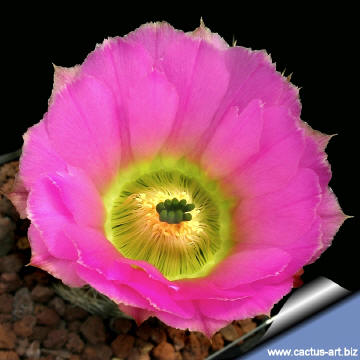
1st day. just after buds opening. Colours are dazzling
|
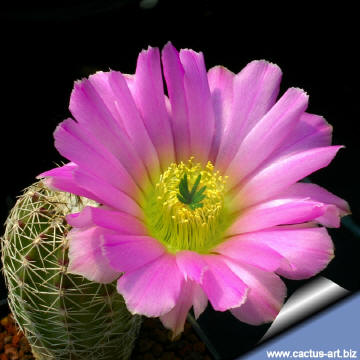
2nd day. The same flower. Colours are more soft. |
|
The flowers have a shocking
yellow-green throat surrounded by a contrasting fuchsia
corolla.
The inner yellow is like the phosphorescent colour of some pen marker or
even more luminescent.
|
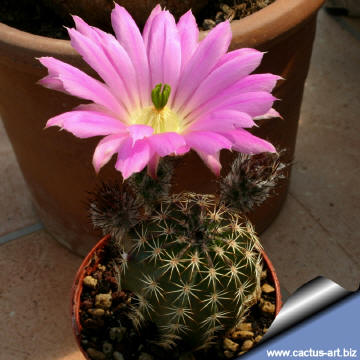 |
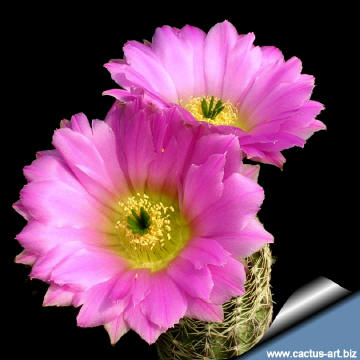 |
|
Advertising
|
|
|
|
|
|
Family:
Cactaceae (Cactus
Family)
Scientific name:
Echinocereus
pamanesiorum Lau 1981:36-41.
TL: Mexico, Zacatecas, Rio
Huaynamota, bridge between Huejuquilla & San Juan Capistrano, Lau 1247 (MEXU).
Heterotypic synonyms:
Echinocereus pamanesiorum ssp.
bonatzii (Römer) Römer 1997:45.
= Echinocereus bonatzii.
Origin:
Mexico (Zacatecas) grows on stony hills with various other succulent
plants.
Conservation status: Listed in
CITES appendix 2
.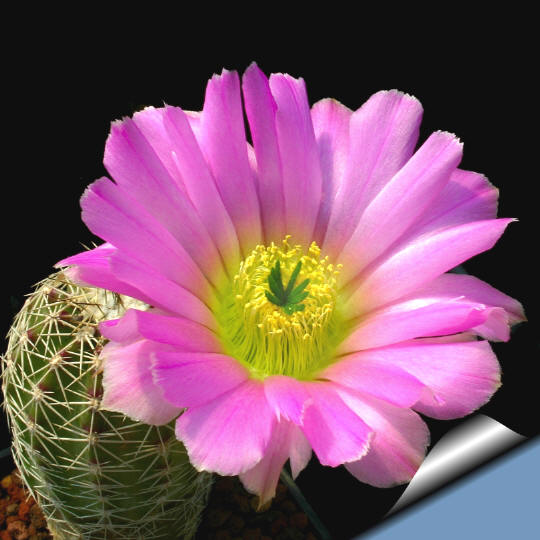
|
|
|
|
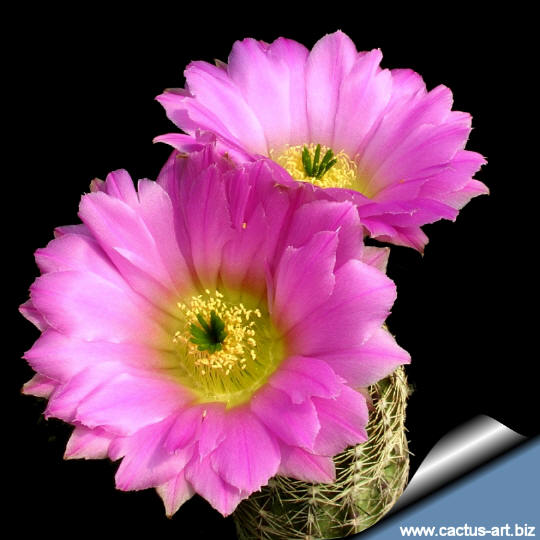
Cultivation: In culture E.
pamanesiorum is without
problems, easy to grow, very attractive and regularly shows its
beautiful flowers, if provided
with an adequate winter rest period. It is
sensitive to over-watering (rot prone),
and needs good drainage. Keep
drier and cool in winter. Needs
full sun. In
the summer they need an airy location in bright sun; well watered when
it's hot. To achieve the best spine density
give these plants lots of sun. In the winter
light, cool, and absolutely dry conditions.
Very cold resistant above -12° C or less for short periods of
time.
In mild climate they grow well when planted freely outside
in well-drained soil.
Propagation: Seeds, Cuttings

 |
|